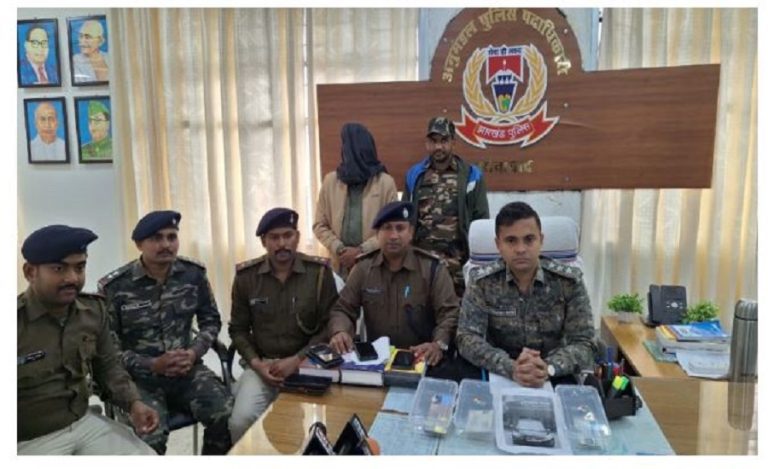There was a time when Katarniaghat, a wildlife sanctuary in Bahraich district of Uttar Pradesh along the porous India-Nepal border, was written off by wildlife experts as a habitat for tiger, saying that the big cats can never flourish there. The tigers here had disappeared just like they did in Sariska. However, a young DFO proved everyone wrong, as within a year of his posting in Katarniaghat, the scenario started to change. He camped for days on end inside the forest, went on foot patrolling even at night to look for signs of any tiger. It took him one full year to finally spot a tiger in Katarniaghat. And this gave him hope and the determination to revive the elusive tiger population.
And from that one encounter with the ‘striped monk’, things started changing and the tiger number started increasing, and today, there are 59 unique tigers thriving in this fragmented area with villages inside it and rivers flowing through it.
The young DFO, during whose tenure the turnaround started, is 1996-batch IFS officer Ramesh Pandey, who was 35 years old then. Today, he is the Inspector General of Forests, Ministry of Environment, Forests & Climate Change, Government of India. In an exclusive conversation with Indian Masterminds, he narrated the interesting story of the revival of tigers in Katarniaghat.

A DIFFICULT POSTING
When Mr. Ramesh Pandey was posted in Katarniaghat Wildlife Sanctuary as DFO in 2005, the other DFOs before him had lasted 6 months to one year at the most. What met him when he arrived in the sanctuary was a system that had collapsed, demoralised staff, and the dominance of mafia and organised gangs of criminals over the area. Timber mafia was felling trees with impunity as most of the forest staff were hand in gloves with them. The poaching gangs, from both sides of the India-Nepal border, were also having a field day. Everybody was going about their work with great enthusiasm except the few remaining honest staff members, who by then were completely demoralised by the prevailing situation.
It fell on Mr. Pandey’s shoulders to restore order. “This was the reason why I was handpicked in 2005 to serve that area as DFO. In the last 30 years, average tenure of a DFO there was 6 months to one year. It was one of the toughest areas to work in. After Katarniaghat was included in Dudhwa Tiger Reserve, it was actually written off by many wildlife experts, including WII, as a tiger habitat. That was the time when Sariska had happened and Panna was in news. I was brought in to revive that place. And I was there for four years.”
SIGHTED A TIGER AFTER ONE YEAR
However, tigers, it seemed, had disappeared. It took him one year to sight one tiger. The division has 550 sq km area, out of which 400 sq km area is the sanctuary. The place was famous for breeding gharials at that time. In 2003, it became a part of the Dudhwa Tiger Reserve, but wildlife experts did not have much hope from this inclusion when it came to tiger revival. However, the new DFO proved them all wrong. It took him one year to sight a tiger, but that one sighting gave him the hope that tigers can thrive in that area once again.
“You would be surprised to know that it took one year for me to locate the first tiger there. Those days, I used to camp in the forest for 15-20 days at a stretch, patrolling on foot day and night just to know whether any tigers were still there or not,” he said.
After the first sighting, he was determined to fill Katarniaghat with tigers once again. He started identifying the reasons for tigers’ disappearance, only to realise that he had a hard task ahead of him.
OPERATION TRISHUL
He started off by controlling the illegal felling of trees in the area. In the first 45 days, 50 criminals were apprehended. Then ‘Operation Trishul’ was launched against the sitting block pramukh and 17 truckloads of timber were seized from him. “The operation took 48 hours and I was there all along with the force of 200 policemen and forest personnel. A known mafia guy had tipped us off,” Mr. Pandey said.

BAWARIYA GANG UPROOTED
After coming down heavily on the timber mafia, Mr. Pandey then focussed on putting an end to the poaching by members of the infamous Bawariya community. This nomadic community originally belongs to Rajasthan but has a base in Haryana’s Samalkha region. They are organised criminals who operate in gangs and go from place to place all across the country committing various crimes, including wildlife poaching.
Most of the tigers in Katarniaghat had been poached by their members. Mr. Pandey successfully busted three of their gangs, and unearthed and laid bare the tiger poaching modus operandi of this community in front of the entire country.
CAPACITY BUILDING
Once the timber mafia and organised poaching gangs were taken care of, Mr. Pandey now turned his attention towards capacity building of staff. Since Katarniaghat was a territorial division before it was brought under the Dudhwa Tiger Resreve, he arranged training for the staff on how to track and monitor tigers and also taught them about habitat management.

HABITAT MANAGEMENT
At the same time, he undertook concerted efforts towards improving the habitat which resulted in the increase of the prey base for tigers. Deer and ungulate population went up and so did the sightings of rhinos, elephants and breeding gharials near the Trans Gerua river that flows through the sanctuary.
The few tigers there now had easy availability of food as well as a protected habitat. This led them to breed and their numbers began to rise, and sightings became more frequent.
TIGER NUMBER SHOOTS UP TO 30+
After the year of the first sighting of a tiger by Mr. Pandey, Katarniaghat field staff sighted 3-4 tigers in the second year. In the third year, visitors to the sanctuary also sighted them. That year was 2008 and the first all India tiger estimation using camera traps, was carried out. It was found that there were now 30+ tigers in Katarniaghat! This good news came on the fourth year of Mr. Pandey’s tenure as DFO of the sanctuary.
CAME UP IN RAJYA SABHA
This incredible turnaround was mentioned in Rajya Sabha by the then MP Chandan Mitra, and former Editor of Pioneer, as a successful story of tiger revival in the country.
The fact that Mr. Pandey managed to check wildlife and forest related crimes in Katarniaghat came to the notice of the Centre and he was brought to the Wildlife Crime Control Bureau.
In his place came 1995-batch IFS officer Ashish Tiwari, who is presently the Secretary of Environment, Forests & Climate Change, Government of Uttar Pradesh. He further galvanised the measures and also created better infrastructure for tourists, as by this time, Katarniaghat had come on the map of wildlife tourism, and visitors from Lucknow and Delhi were flocking to it.
Mr. Pandey said, “I revived the area in 2005-2008. Ashish Tiwari took the work ahead by creating more infrastructure. And, now, the present DFO, Akash, is doing a good job. However, when people hear the name of Katarniaghat, they still recall the extreme hard work, protection, and management through which it was revived. Seeing this revival, the Valmiki Tiger Reserve in Bihar was also revived on similar lines.”

LATEST ESTIMATE: 59 TIGERS!
WWF-India (World Wide Fund for Nature) too has been working closely with the forest department in Katarniaghat sanctuary for more than two decades. According to WWF-India’s Senior Director, Biodiversity Conservation, Dr. Dipankar Ghose, their objective is to ensure long-term survival of tigers, co-predators and prey along with other wildlife, through robust monitoring, strengthening protection, promoting co-existence and inclusive conservation. “The latest all India tiger estimation has reported that this sanctuary has 59 tigers. This has been possible due to the visionary leadership for wildlife conservation that was started by Mr. Ramesh Pandey, who served as DFO Katarniaghat and later as Field Director of Dudhwa Tiger Reserve,” he added.
Immensely happy with the fifth cycle estimation report, Mr. Pandey said, “There are very few divisions that will have 50 to 60 tigers in 550 sq km, that too fragmented, and with villages within the area. It’s an amazing feeling to see that a place that was written off by wildlife experts has 59 tigers now. This happened because we created an eco-system for tigers to flourish.”
And the present DFO of Katarniaghat, 2016-batch IFS officer, Mr. Akash Deep Badhawan, is also focussing on just that – on creating a conducive environment for the tigers to flourish. Besides concentrating on grassland management and water hole monitoring to create a healthy prey base, he is also focussing on “ruthless enforcement of law” in the area to create a safe environment for the tigers.
He said, “There are 16+ villages and ‘mazars’ inside the sanctuary. We are strictly enforcing rules and regulations for the villagers as well as the pilgrims. Human interference has to be reduced to enable the animals to start taking up their natural space. The tiger is a shy animal. Ramesh Pandey sir always calls it the ‘striped monk’. And, a monk likes to stay aloof.”

































